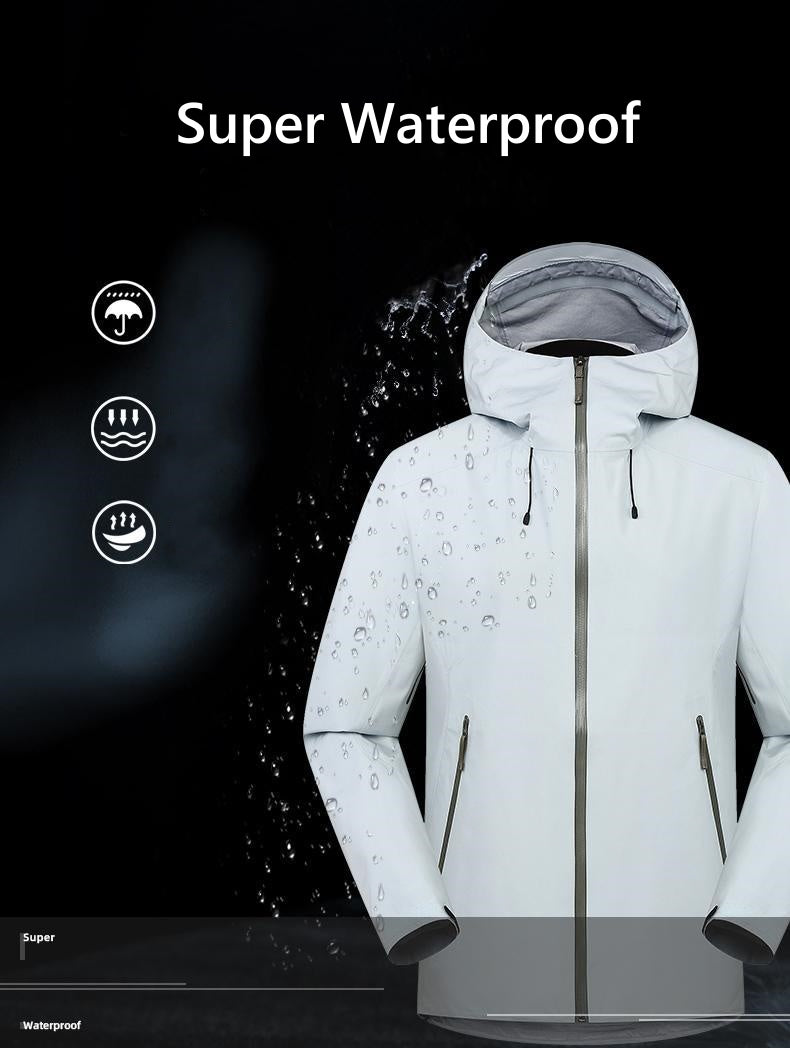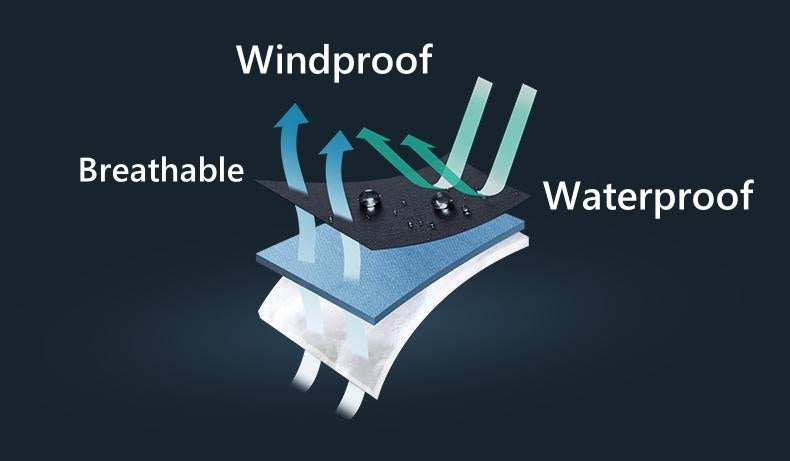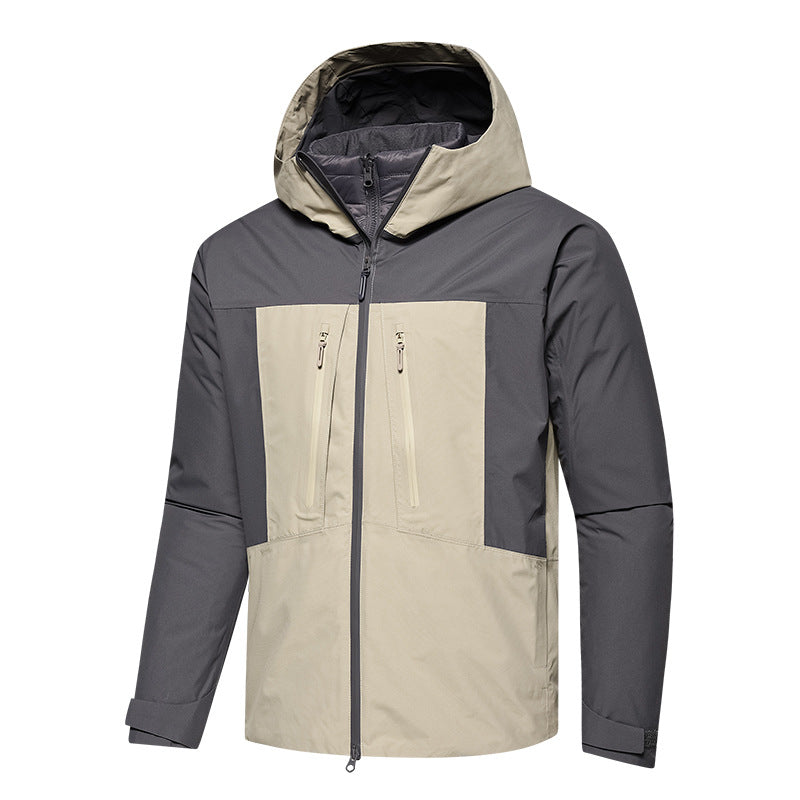
What You Need to Know Before Buying Waterproof Breathable Jackets: A Comprehensive Guide
Share
When it comes to discussing why a waterproof jacket offers both rain protection and breathability, many might refer to the presence of a waterproof and breathable membrane. However, this explanation tends to be too general. To make a reliable purchase decision for a waterproof jacket, it's crucial not to rely solely on extravagant technological claims made by manufacturers. Instead, pay attention to the performance standards indicated on the clothing label.
For instance, a jacket labeled with GB/T 32614-2016 meets the criteria for a genuine waterproof jacket, which is significantly higher than those labeled with FZ/T 81007-2012 or FZ/T 81008-2011. The former ensures genuine waterproofing, while the latter jackets only exhibit water repellency. Despite the one-letter difference between "water repellency" and "waterproofing," their underlying principles are entirely distinct. Water repellency only guards against splashes, whereas waterproofing requires the fabric to withstand a certain degree of water pressure, thus shielding against rainy and snowy weather conditions.

The often-promoted "lotus effect" claimed by many manufacturers as a water repellency feature is fundamentally different from the genuine lotus effect. Water repellency is typically achieved by incorporating chemicals like perfluorooctanoic acid that minimize the fabric's surface energy, similar to an enhanced non-stick coating, thereby causing water droplets to roll off the surface. However, the authentic lotus effect involves physical nanostructured convex patterns. If a clothing brand cannot distinguish between water repellency and the genuine lotus effect, their garment design might fall short of excellence. Renowned international brands of waterproof jackets generally refrain from using the term "lotus effect" in their promotions. Therefore, encountering such claims should be a signal to steer clear and avoid potential misinformation.
This article provides essential insights into distinguishing genuine waterproof jackets from those with mere water-repellent features. The core message is to urge consumers not to solely rely on numerical values. In general, light rain only requires a waterproof rating of 3000mm, moderate rain around 5000mm, and heavy rain about 8000mm. However, for activities like skiing or mountain climbing, the significance of waterproof ratings diminishes. Thus, excessive focus on high numerical values might lead to unnecessary pitfalls.
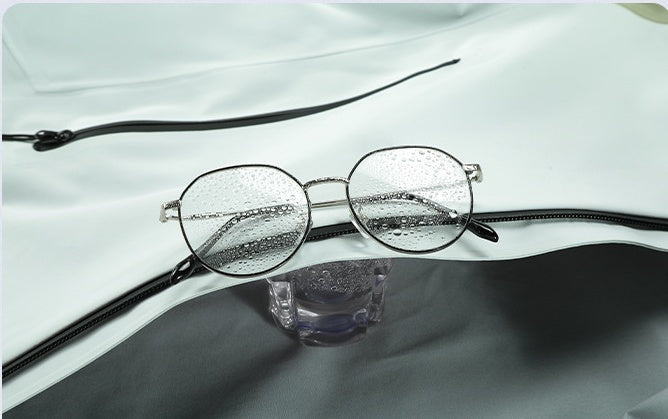
The fabric of a waterproof jacket combines water resistance and breathability. The outer layer utilizes perfluorinated compounds (PFCs), providing water repellency to keep the garment dry. However, the waterproofing capability relies on the jacket's inner layer, which is not a fabric per se but a membrane. This leads us to the renowned GORE-TEX waterproof and breathable fabric, comprising a membrane known as expanded polytetrafluoroethylene (ePTFE). Imagine this material as akin to the plastic bags used in plumbing at home, stretched to create a nearly breakable yet unbroken appearance. Under an electron microscope, it exhibits numerous pores larger than gaseous water vapor molecules, allowing sweat vapor to escape. Simultaneously, the pore size is smaller than that of liquid water molecules, preventing rainwater penetration, thus achieving the dual effect of waterproofing and breathability.
Many might be familiar with this fact about GORE-TEX fabric, but let's delve deeper into its composition. GORE-TEX fabrics can be classified into three main categories: infinium Windstopper, GORE-TEX Products, and GORE-TEX PRO. The waterproof and breathable principle mentioned earlier actually pertains to the infinium Windstopper series, primarily used for windproof jackets rather than waterproof ones. Although these jackets initially protect against rain, their waterproofing tends to degrade after a couple of days of wear or one wash. The crux of this issue lies in the human body's secretion of sweat and sebum, which infiltrate the gaps within the ePTFE membrane, significantly compromising its waterproofing ability. Moreover, these gaps are at a nanometer level, making it challenging to wash out once sebum has penetrated. To address this challenge, engineers at GORE-TEX devised a solution by directly applying a polyurethane (PU) coating on the membrane's inner layer to block the pores, preventing sebum from permeating. This innovation led to the creation of the GORE-TEX Products series.
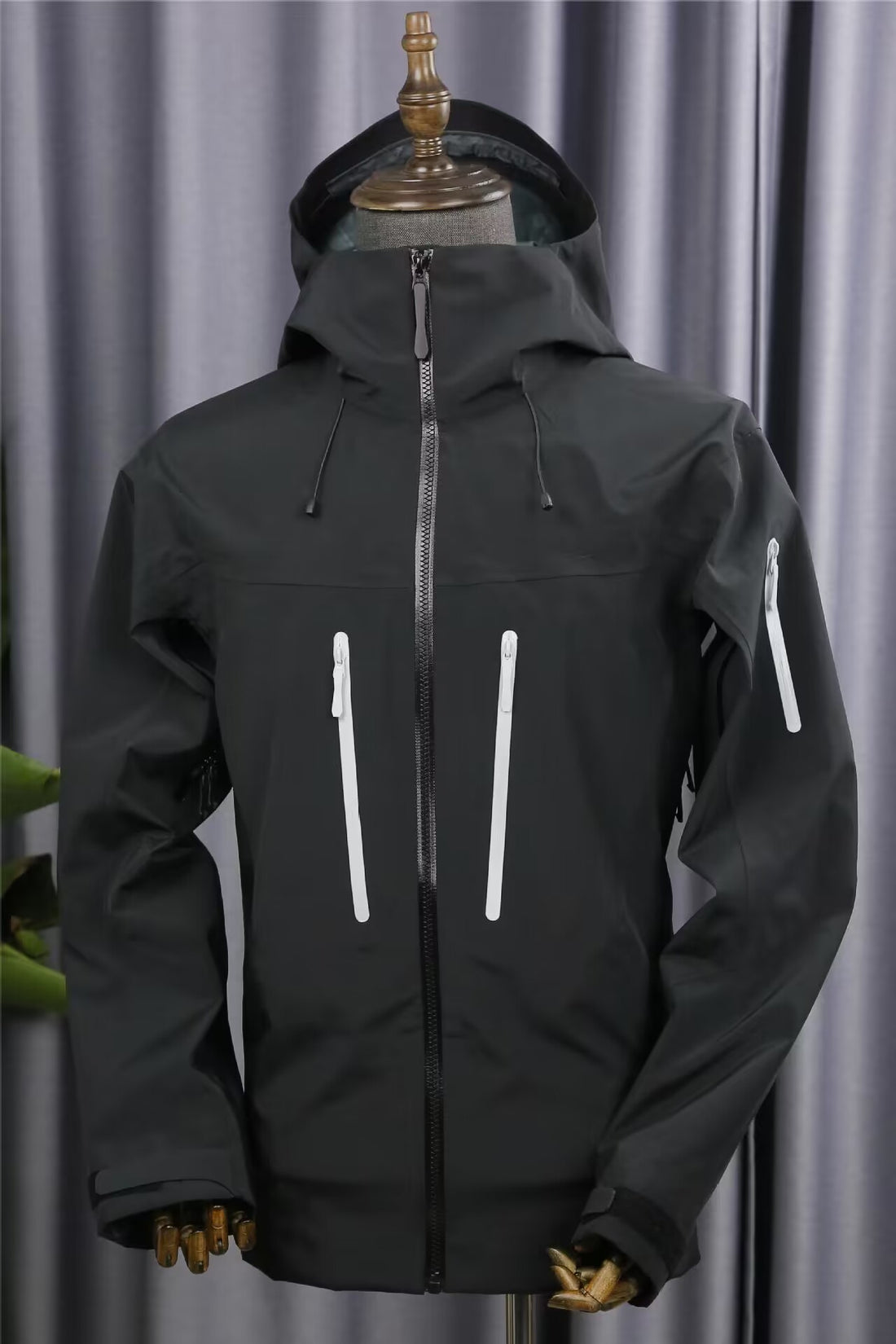
The incorporation of PU (polyurethane) serves a dual purpose in the GORE-TEX fabric. Firstly, it effectively seals the pores in the expanded polytetrafluoroethylene (ePTFE) membrane, akin to a slowly permeable plastic bag, preventing immediate penetration during heavy rain. The human body's sweat volume is relatively minimal, allowing the PU coating to absorb and gradually evaporate moisture from the gaps in the ePTFE membrane. However, this development introduced a significant issue in the GORE-TEX Products fabric - it only offers moisture permeability (transpiration) but lacks breathability (vapor transmission).
 In numerous advertisements for waterproof jackets, some emphasize "transpiration" while others mention "vapor transmission." The distinction lies in their vastly different waterproof membrane technologies. The GORE-TEX Products fabric, with its PU coating, boasts excellent waterproofing that doesn't significantly deteriorate with wear. However, it restricts the effective dissipation of sweat, making it feel rather stuffy to wear.
In numerous advertisements for waterproof jackets, some emphasize "transpiration" while others mention "vapor transmission." The distinction lies in their vastly different waterproof membrane technologies. The GORE-TEX Products fabric, with its PU coating, boasts excellent waterproofing that doesn't significantly deteriorate with wear. However, it restricts the effective dissipation of sweat, making it feel rather stuffy to wear.
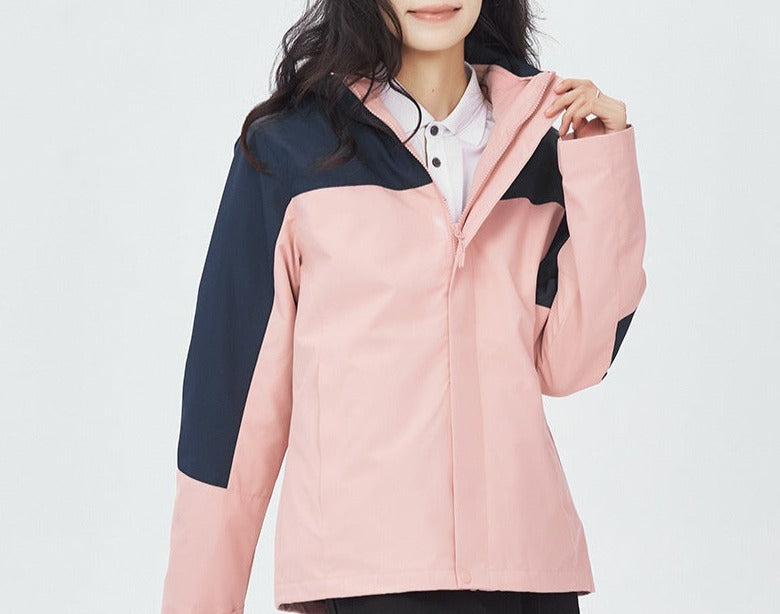
To resolve the inherent contradiction between outdoor performance and comfort, GORE-TEX engineers innovated by enhancing the membrane with perfluorinated compounds, upgrading the chemical structure of ePTFE from a full fluorocarbon bond to six full fluorocarbon bonds. While the technicalities might be complex, the key point is this improved ePTFE membrane, found in the top-tier GORE-TEX PRO series, not only enhances waterproofing but also naturally repels skin oils. Consequently, this advanced GORE-TEX fabric eliminates the PU membrane barrier, allowing sweat to evacuate more easily. True outdoor enthusiasts understand that rain isn't the primary concern; rather, it's the delayed evacuation of sweat within the body that leads to a substantial loss of body heat, which can be far more perilous.
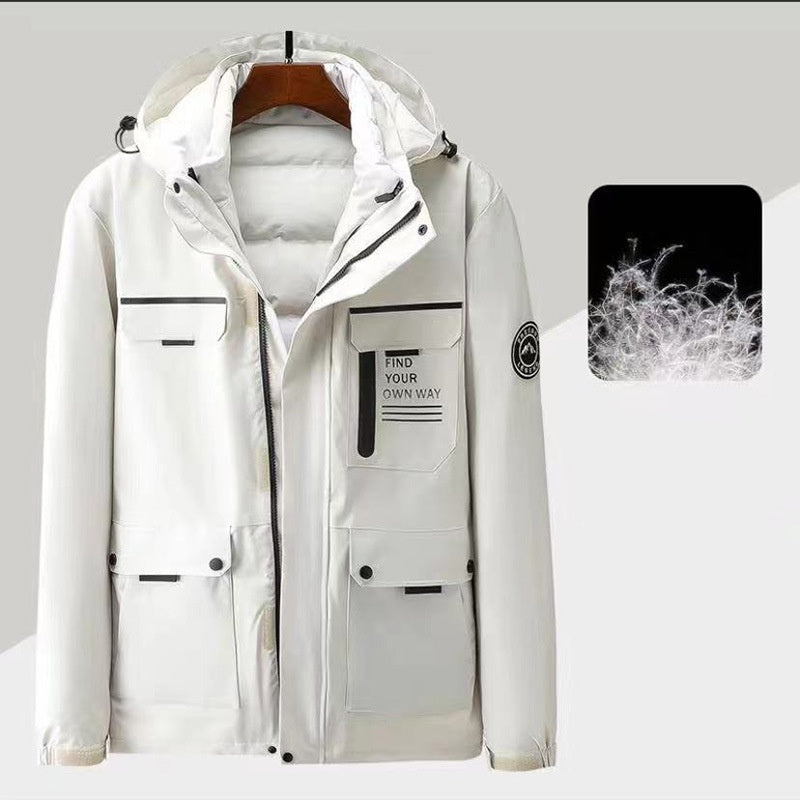
The reason why the renowned GORE-TEX Paclite series wasn't mentioned earlier is that it's essentially part of the GORE-TEX Products line. This particular fabric emphasizes being lightweight and portable by omitting the body-contact layer of fabric, thereby reducing weight. This layer typically serves to prevent the skin from damaging the membrane, which is fragile and easily torn—similar to the fragility experienced when handling certain types of plastic bags.
Without this protective layer, what measures are taken? Similar to the GORE-TEX Products line, a layer of PU (polyurethane) is applied, but with a distinct addition of carbon black. This addition serves two purposes: aesthetics and enhanced durability. Just like in car tires, the addition of carbon black enhances abrasion resistance and prolongs usage. In essence, this fabric is also only capable of moisture permeability (transpiration) but not vapor transmission (breathability).
 But is this all there is to know about waterproofing in performance jackets? Far from it. The waterproof and breathable membranes in GORE-TEX fabrics are primarily based on expanded polytetrafluoroethylene (ePTFE), which is relatively expensive. Currently, the market predominantly offers pure PU or TPU (thermoplastic polyurethane) membranes. For instance, Japan's Toray's Pertex and Dermizax are representative of PU membranes, offering only moisture permeability but not breathability. Despite this, if you look at their moisture permeability indicators, they can reach high values, even up to 20,000 or 30,000.
But is this all there is to know about waterproofing in performance jackets? Far from it. The waterproof and breathable membranes in GORE-TEX fabrics are primarily based on expanded polytetrafluoroethylene (ePTFE), which is relatively expensive. Currently, the market predominantly offers pure PU or TPU (thermoplastic polyurethane) membranes. For instance, Japan's Toray's Pertex and Dermizax are representative of PU membranes, offering only moisture permeability but not breathability. Despite this, if you look at their moisture permeability indicators, they can reach high values, even up to 20,000 or 30,000.
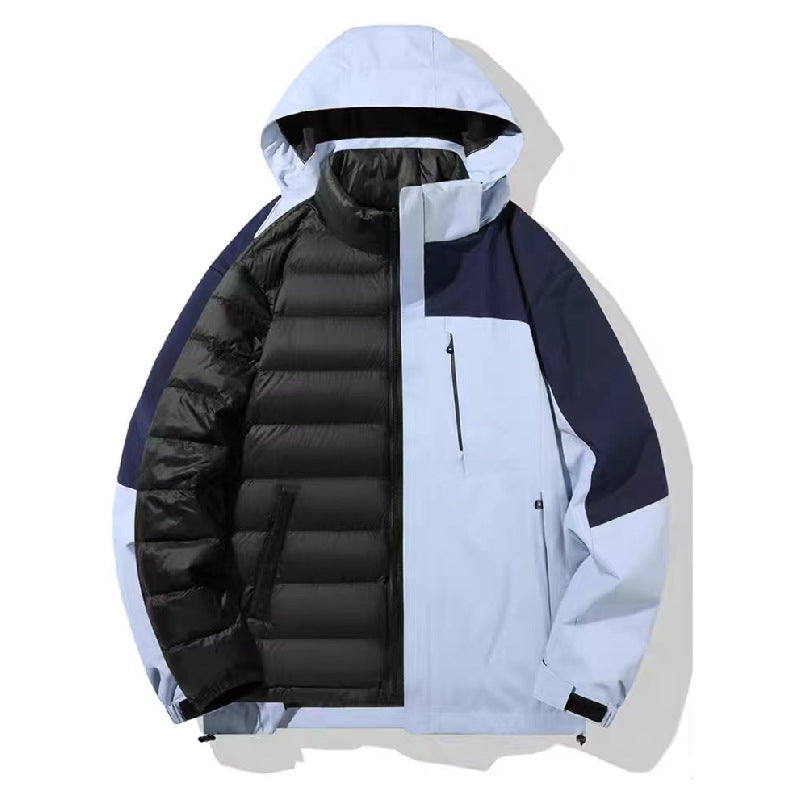
The GORE-TEX Paclite series stands out due to its focus on lightweight portability by excluding the body-contact layer to save on weight. However, it compensates for the missing layer with a PU coating infused with carbon black, offering moisture permeability but not breathability. This is just one example among several types of waterproof and breathable membranes available in performance jackets, showcasing the variety and complexity within this realm of technical fabrics.
When it comes to assessing the moisture permeability of performance jackets, it's essential to highlight the significance of recognized testing standards. Without a specified compliance standard, the high or low values of moisture permeability data hold no concrete significance. Currently, the most common testing standards for moisture permeability include the upright cup method, the inverted cup method, the calcium chloride method, and the potassium acetate method.
The upright cup method involves placing water inside a cup and covering it with the fabric to measure how much water evaporates through the fabric. Despite seeming reliable, this method is the least accurate since the water in the cup is in close proximity to the fabric. Slight movements can cause water to touch the fabric, leading to highly inaccurate moisture permeability values.
The inverted cup method, similar to the upright cup method, involves water in a cup covered by the fabric, but here, the cup is turned upside down. Due to direct contact between water and the fabric and the added weight of water pressure, this method yields excessively high moisture permeability values. Fabrics with PU (polyurethane) membranes often favor this testing standard. However, a flaw in this method lies in the screws of the moisture permeability cup; if not tightly sealed or maintained over time, water can leak from the edges, resulting in inflated moisture permeability values.
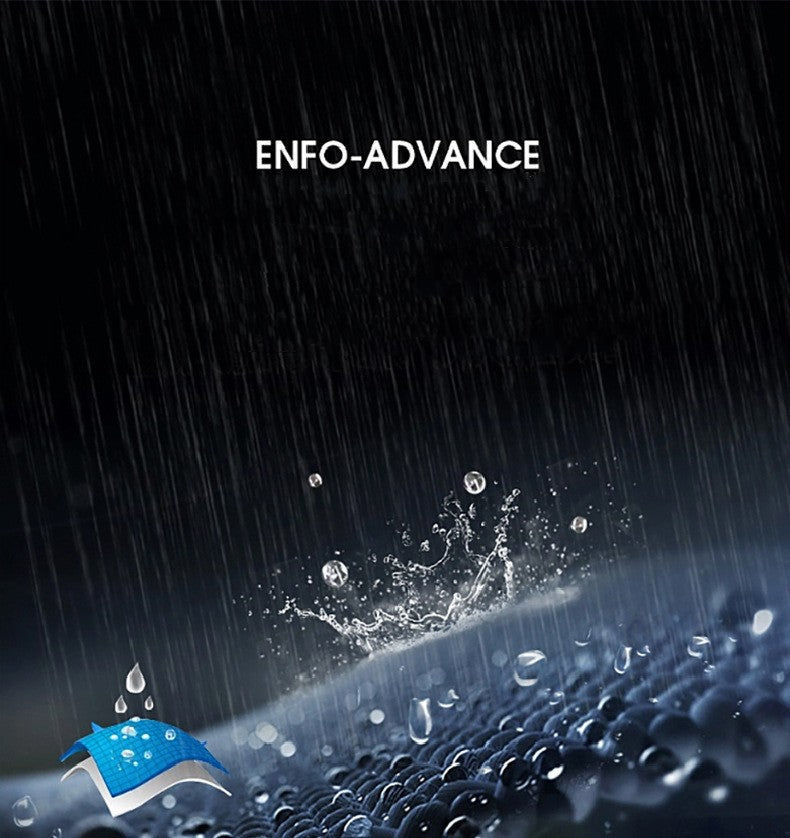
The most reliable method is the calcium chloride method, which doesn't involve water in the cup but instead utilizes anhydrous calcium chloride, a common desiccant (the primary ingredient in some weed killers). The fabric covers the cup, and the amount of moisture absorbed from the air is measured. This testing method is minimally prone to external interference, closely resembling actual wearing experiences, and higher values signify superior breathability. However, this method is primarily applicable only to ePTFE (expanded polytetrafluoroethylene) membranes without PU coatings since PU membranes cannot be evaluated using this test.
On the contrary, the potassium acetate method is the most unreliable. It involves placing potassium acetate in the cup, covering it with the fabric, and then submerging the cup in a water bath with external water pressure applied. This method results in significantly higher moisture permeability values than even the inverted cup method, making it less trustworthy and dependable.
For those new to this information, relying solely on moisture permeability values can be misleading. To avoid falling into potential pitfalls, remember that for comfort, opt for single-component modified ePTFE membranes. For waterproof performance, both single-component modified and two-component ePTFE membranes, as well as PU/TPU membranes, work well. If the budget is tight, TPU membranes can be an option, while environmentally conscious consumers may prefer PU membranes due to their solvent-based coating with minimal plasticizers, allowing for natural decomposition when disposed of in soil—something brands like Patagonia, focused on sustainability, prefer.
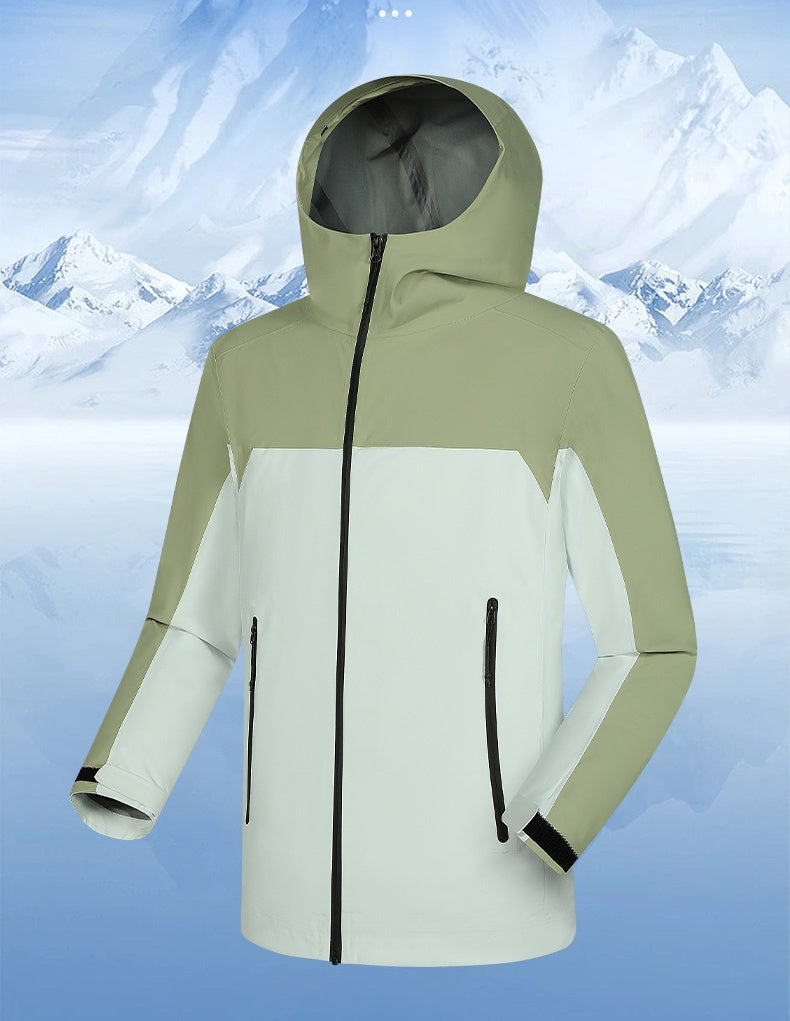
However, it's crucial to mention that the degradation process occurs during the garment's usage and wears out its efficiency within about two years or after approximately fifteen washes. After this period, the waterproof performance significantly declines. Beyond fabric waterproofing, the craftsmanship of a performance jacket is also pivotal. As jackets are assembled from multiple fabric pieces, the joining involves stitching, which creates needle holes—potential entry points for water. To seal these, a layer of adhesive tape is applied. The quality of this tape application is a critical aspect. Often, decreased waterproofing in a jacket is not due to fabric issues but rather faulty adhesive sealing at the stitched areas.

Here, I'd like to share a super important purchasing tip. A high-quality performance jacket has adhesive tape edges that slightly overflow with adhesive, allowing for a smoother transition between the tape and the fabric. On the contrary, a lower-quality jacket might exhibit a more pronounced step-like transition between the adhesive tape and the fabric, which increases the likelihood of adhesive failure. The overflow adhesive technique, a hallmark of high-end performance jackets, significantly extends the garment's lifespan.
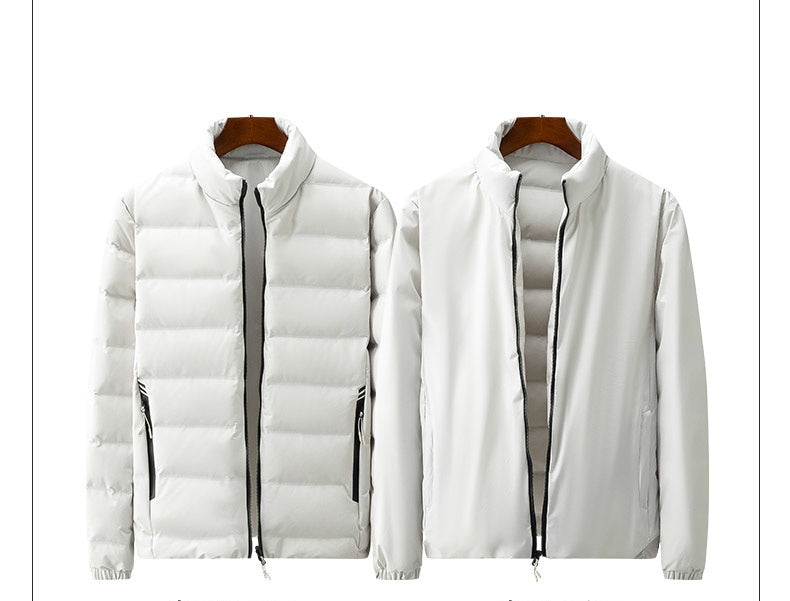
In summarizing the knowledge about performance jacket fabrics, the crucial point is not to blindly chase numerical values. Typically, light rain requires a waterproof rating of 3000mm, moderate rain around 5000mm, and heavy rain around 8000mm. However, for activities like skiing or mountaineering, the significance of these numerical waterproof values diminishes. Pursuing high numerical values blindly may lead to various pitfalls.
In conclusion, today's knowledge aims to assist you in purchasing a performance jacket without stumbling into unnecessary pitfalls.

